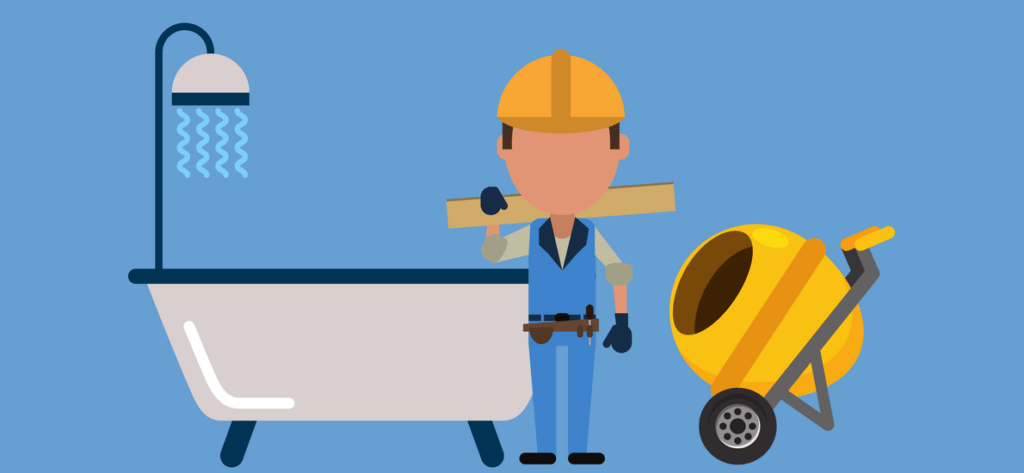Bathrooms are often the first area of a home that needs addressing when someone's mobility is affected. Think tight doorways, hard to manage baths and a general lack of space.
This post we are interviewing building accessibility expert, Chris Lok from Disability Modifications. Chris and his team of builders are specialists in turning unlivable houses into accessible and comfortable homes. They have over 25 years of experience and offer temporary or permanent home alterations for those that need help during their recovery.
In this four-part bathroom accessibility series, Chris will discuss the common misconceptions about bathroom modifications as well as provide tips for those looking to make some changes themselves.
What is a common question you get asked from clients?
The number one thing I get asked all the time from clients is "my bathroom is very old, is there still something I can do to modify it?".
To which I always answer of course, there are very few bathrooms that are too old.
So, how old is too o
For me it is not so much of a question as to whether the house is too old but more a question of whether the house is structurally sound to allow modifications to be taken out.
Take for example, an old Queenslander on stumps as found in most older suburbs around Brisbane. If the stumps are in good condition and the house itself is not showing signs of excessive movement, then it is more than suitable for modifications.
If in doubt we will always consult a Structural Engineer, particularly if we need to move some walls around.
When you are working with an old bathroom, what are some of the things you need to look out for?
Asbestos
The first and most important thing to look for is asbestos.
Any home build before 1980 (and some after) will most likely have asbestos wall and ceiling sheeting installed in the bathroom.
This has to be removed by a QBCC licenced asbestos removal contractor.
In any bathroom where we have to remove asbestos, we also bring in a local laboratory to carry out air-monitoring. Small detection units called 'sniffers' monitor the air around the area where the asbestos is being removed and detects any airborne asbestos particles. If any particles are detected, then the asbestos removal contractor has to arrange to the affected area professionally cleaned. This air-monitoring provide protection and certainty for the client that no asbestos dust is spread throughout the house.
White Ants & Water Damage
The second thing to look at would be the structural integrity of the wall and floor frame, looking specifically for any long-term water damage or the presence of white ants.
In older homes, the frames were mainly constructed out of hardwood, which is generally in good condition. Post-war, when material such as hardwood was difficult to get, inferior products like pine were used. These products are vulnerable to water damage and tend to make good homes for white ants.
Electrics & Plumbing
Lastly we will look at the electrical and plumbing in a home.
If the house contain original wiring, then rewiring becomes a possible requirement.
The original hot and cold water pipes would most likely be galvanised pipes. These are often badly corroded internally and can restrict the water pressure and flow. No one likes a low pressure shower! We would replace these pipe with new copper or plastic pipes.
When working with an old bathroom, what are some things you do to update it?
Ultimately, this depends on the client's requirements and their financial position.
There are a few things we typically do for most people who require bathroom modifications. This includes remove this existing bath and replacing it with a shower recess. We often replace the hot and cold taps with a new combination and we would also replace the galvanised waste pipe with new pvc pipes.
We will always install ply supports in the wall frame to provide fixing points for future grabrails, handshower and fold down shower seats, even if this may not be required for some time.
We will also always check with our electrician to see if the bathroom needs upgrading to comply with the current Electrical Regulations. These regulations have recently been updated to specify the approved distances that the light, powerpoint and switched have to be away from the handshower outlet. We would likely update the powerpoint to be waterproof and replace the lights with brighter ones.
If the client wants a full bathroom upgrade, then we look at things like:
What is the single best product or adjustment a person could add or make that would improve their bathroom accessibility?
Grabrails would be the single most requested modification items regardless of age or disability. Grabrails can be installed in and around showers, over and around baths and beside the toilet.
Thanks Chris.
If you want to read more on bathroom modifications, check out Chris' next article on small bathrooms below.
Chris and his team of specialist builders are experts in disability modifications. They provide realistic and achievable solutions no matter the budget or living requirements.
If you want to get in touch with Chris directly, click the button below.


